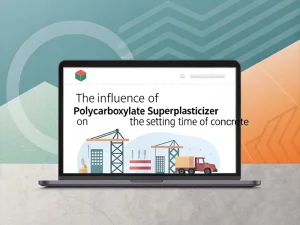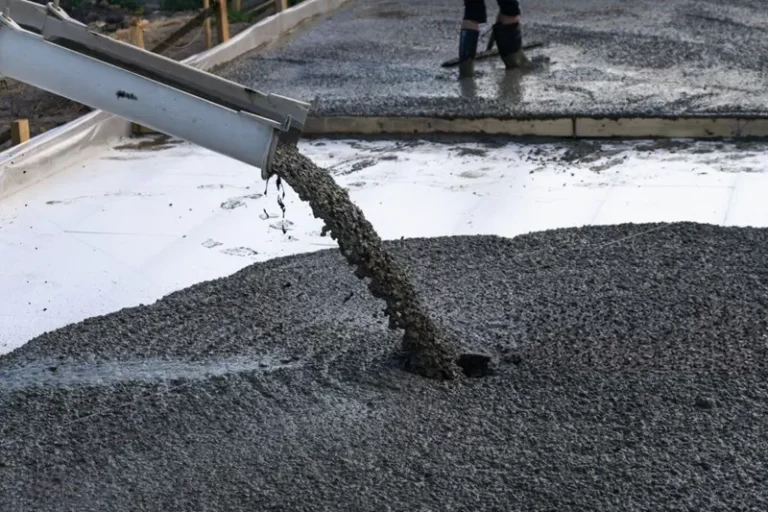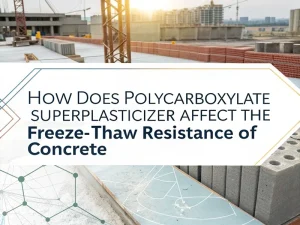
Blog The influence of pol

There are several key factors to consider when selecting the right superplasticizer in concrete to ensure that the performance and construction requirements of the concrete are met. The following are some guiding principles:
Consider the type of superplasticizer: Superplasticizer can be categorized into different types, such as air-entraining and non-air-entraining types. Gas-entraining type superplasticizers such as methyl naphthalene system, thick ring aromatic anthracene system, etc., their appropriate dosage is 0.5% to 1.0% of the cement dosage; non-gas-entraining type superplasticizers such as honey amine resin system, naphthalene system, its dosage can be selected between 0.3% and 5%, and the optimal dosage is 0.7% to 1.0%. The dosage should be reduced appropriately for prefabricated components that need to undergo a steam-curing process.
Pay attention to the mixing method of the superplasticizer: A highly efficient superplasticizer should be mixed in the solution, and the water in the solution should be deducted from the total water consumption. The most commonly recommended method is adding the superplasticizer to the mixing water (later than the initial portion of the mixing water).
Consider the adaptability of the superplasticizer: Due to the differences in cement varieties, finenesses, and mineral components, there may be problems with the adaptability of high-efficiency superplasticizers to cement. Therefore, tests should be carried out before use to ensure the compatibility of superplasticizers with concrete components.
Focus on the performance of the superplasticizer: High-performance superplasticizers such as polycarboxylate superplasticizer have high water reduction rates and excellent fluidity, which can significantly improve the strength of concrete and reduce the total alkali content. When selecting the superplasticizer, the specific improvement effect on the concrete performance should be considered.
Pay attention to the use of composite superplasticizer: composite high-efficiency superplasticizer composition is different, the brand is very much, and whether it is applicable must first be examined by the test mix. When using composite superplasticizer, its effect on the slump loss of concrete should be considered because some types of superplasticizer may lead to a more considerable slump loss of concrete.
In summary, when selecting suitable high-efficiency superplasticizers, factors such as the type of superplasticizer, mixing method, adaptability to cement, performance characteristics, and whether it is a composite superplasticizer need to be considered. Testing and evaluation ensure that the selected superplasticizer can meet the performance requirements and construction conditions of concrete.

Blog The influence of pol

Blog How does polycarboxy